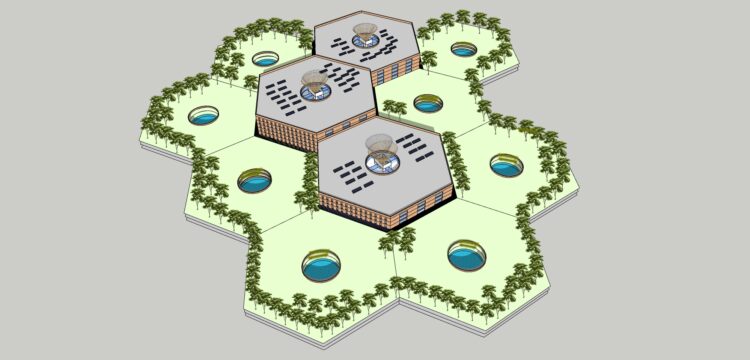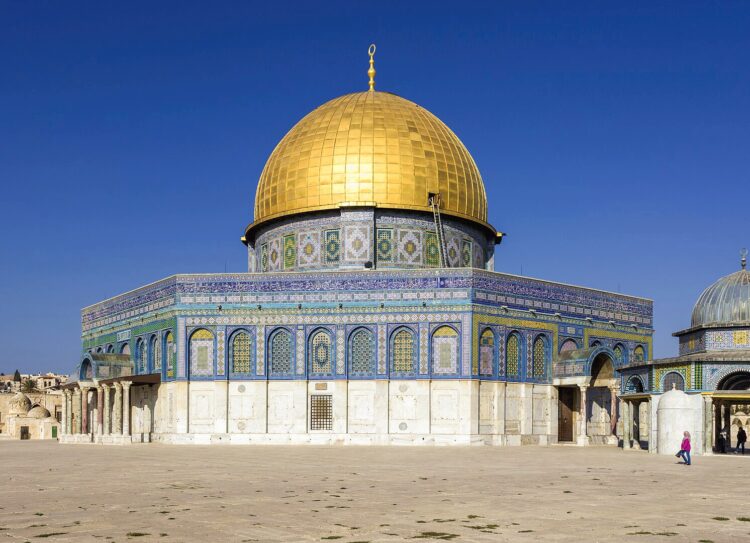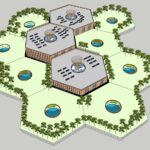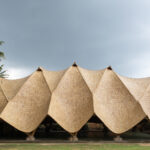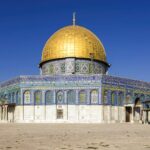Hello there! How is it going? Hope you are all healthy and going well. This time I’d like to take to another region of India with equally fascinating Architectural specimens. The State of Madhya Pradesh houses an Architectural jewel that seems to have been built out of a whole stone block as per its perfection and geometrical accuracy, a reflection of the Chandella Art and Architecture.
The Khajuraho Group of Monuments, nestled in the central Indian state of Madhya Pradesh, is a UNESCO World Heritage site famous for its intricate temples and exquisite sculptures. Built by the Chandela dynasty between 950 and 1050 CE, the temples are a testament to India’s artistic, architectural, and spiritual heritage. The Khajuraho temples are revered not only for their erotic and sensuous depictions but also for their unique architecture, which integrates advanced concepts of geometry—especially fractal geometry, long before the formalization of fractal theory in the 20th century. This intriguing blend of art, spirituality, and mathematical precision makes the Khajuraho Group of Monuments a marvel that continues to captivate historians, architects, and mathematicians alike.
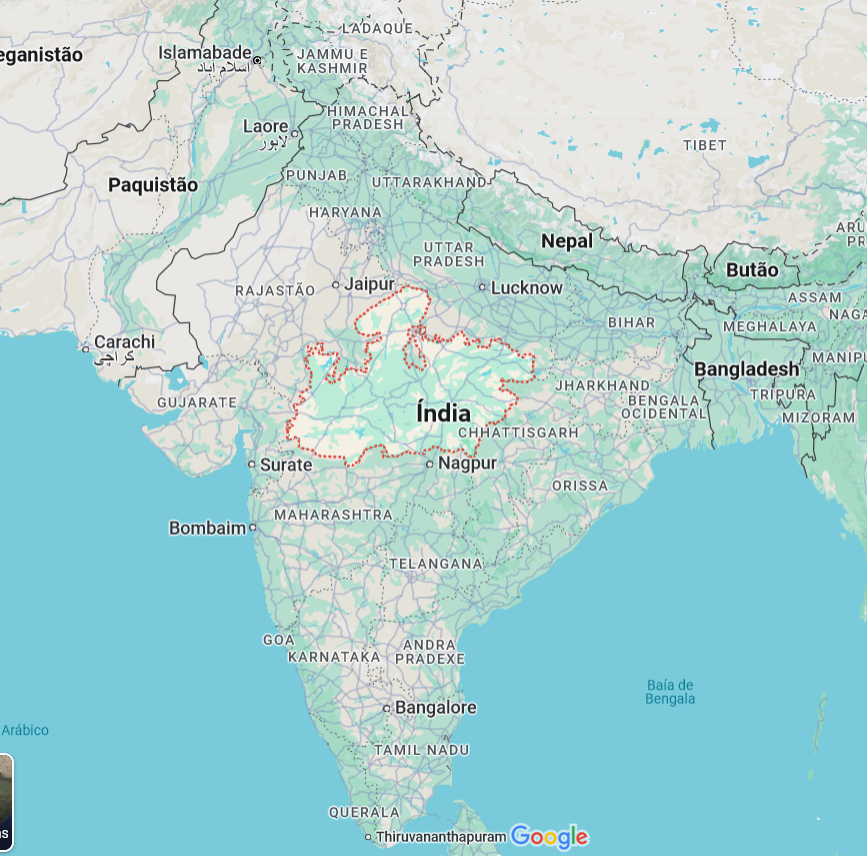
Location of the state of Madhya Pradesh in India. Source: Google Maps.

The Khajuraho Group of Monuments distribution in the historical site. Source: https://en.wikipedia.org/wiki/Duladeo_Temple
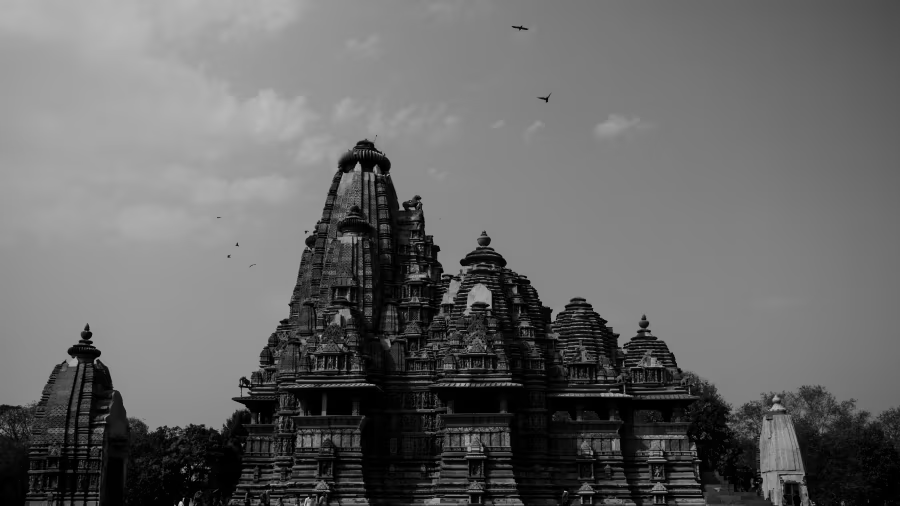
One of the temple’s facade with its stunning look and high precision geometrical patterns. They even seem to be carved out of a single stone block. Source: https://www.hotelclarks.com/khajuraho/blogs/the-astounding-kandariya-mahadeva-temple.html

Detail of one of the temple’s facade with its stunning look and high precision geometrical patterns. They even seem to be carved out of a single stone block. Source: https://www.hotelclarks.com/khajuraho/blogs/the-astounding-kandariya-mahadeva-temple.html
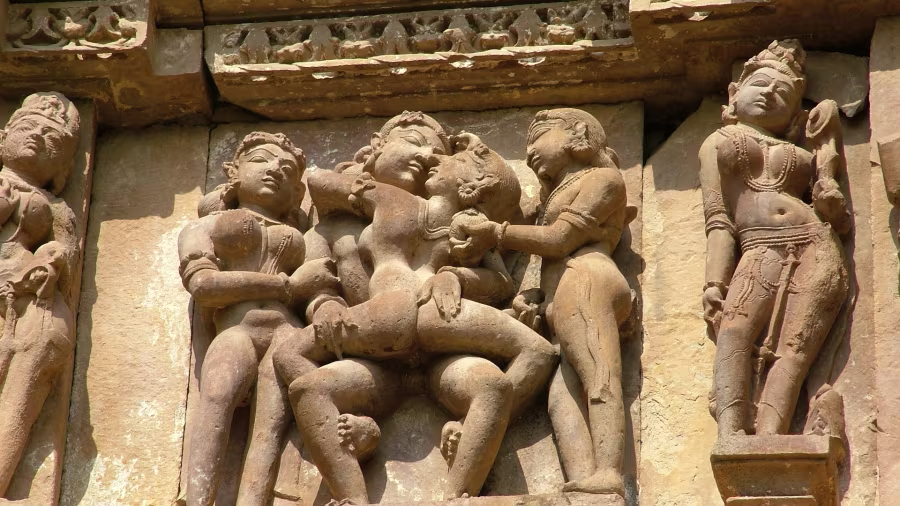
The temples’ erotic and sensuous depiction carved out in stone are absolutely stunning and detailed. The symbolism in those pictures is no doubt present, we just need to decipher the message left to us in stone. Source: https://www.hotelclarks.com/khajuraho/blogs/the-astounding-kandariya-mahadeva-temple.html
Understanding Fractals and Their Connection to Ancient Indian Architecture
Fractals, in mathematical terms, are self-replicating structures that exhibit similar patterns at different scales. When you zoom in on a fractal pattern, you continue to see the same shapes and designs repeating infinitely, no matter how deep you go. Famous examples include the Mandelbrot set or the shape of a snowflake. Fractal geometry exists abundantly in nature—in the structure of trees, mountain ranges, clouds, and even our blood vessels. This concept was formally explored by mathematician Benoît B. Mandelbrot in the 1970s, but remarkably, the architects and artisans of ancient India intuitively incorporated fractal geometry into the design of temples like those in Khajuraho.
Indian temples often employ fractal structures as a method to symbolically represent the infinite and the cosmic order, aligning with Hindu cosmology, where the universe is a never-ending cycle of creation, preservation, and destruction. Fractal geometry was thus not only an aesthetic choice but a philosophical and spiritual one as well. In Khajuraho, we see fractal patterns emerge in the construction of temple spires, intricate carvings, and the repetitive use of motifs that mirror the vastness and interconnectedness of the cosmos.
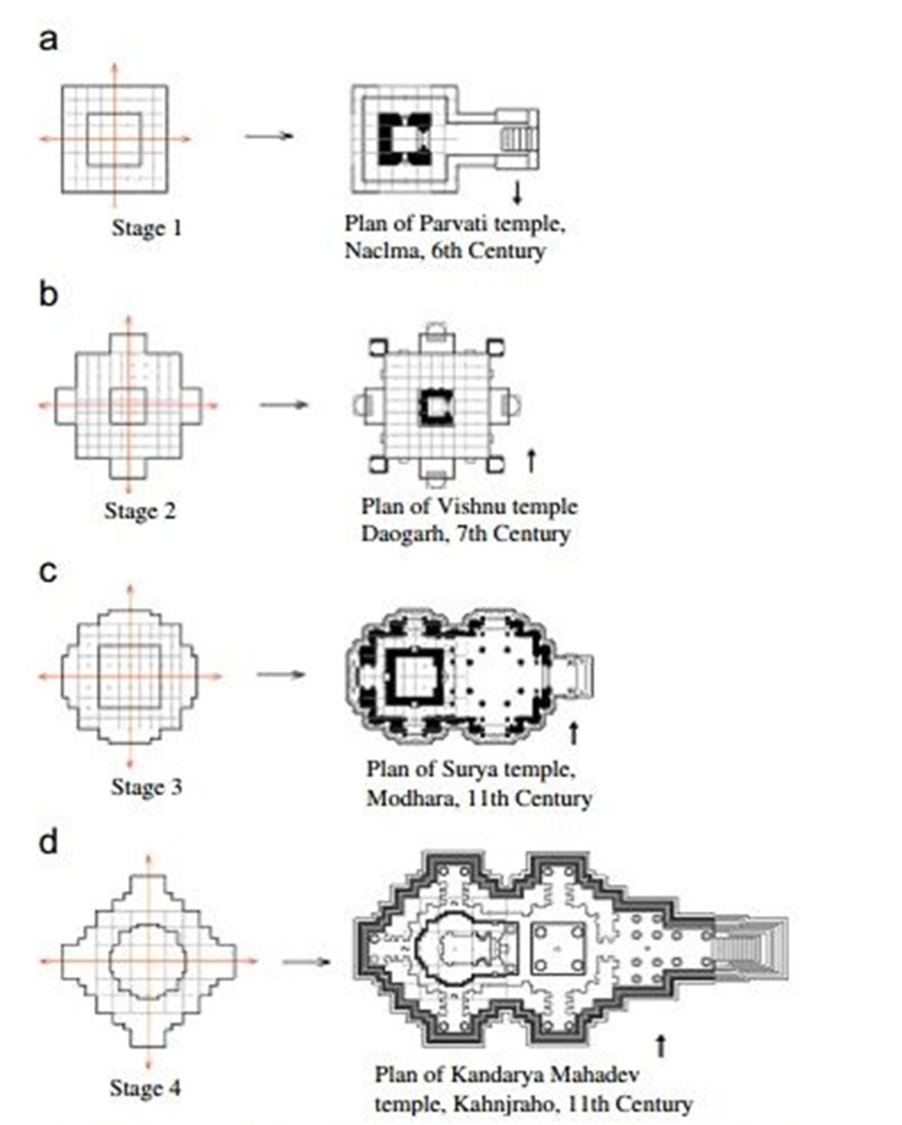
The temples built throughout the times in stages reflecting a sort of ‘fractal evolution’. Source: https://encurtador.com.br/Geujx
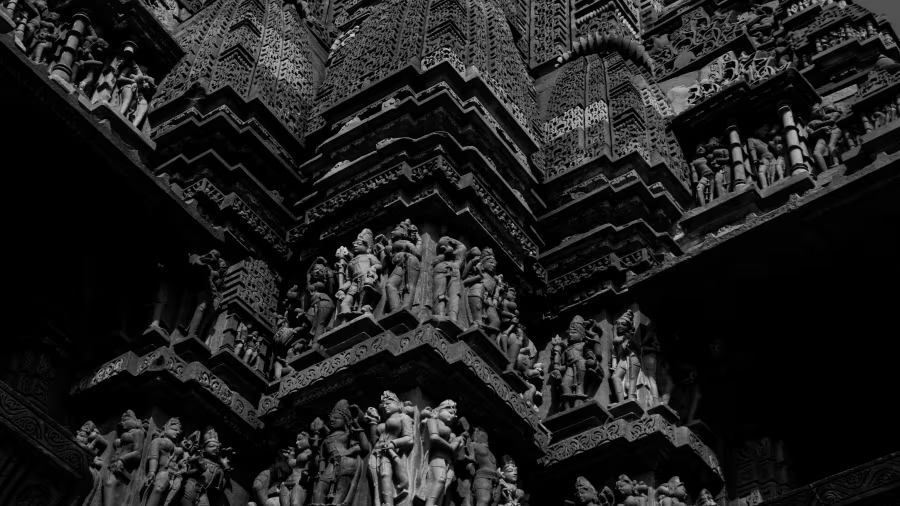
The ‘fractal evolution” is also present in its decorated facades with very detailed and impressive stone carvings. What messages were they trying to send us? Source: https://www.hotelclarks.com/khajuraho/blogs/the-astounding-kandariya-mahadeva-temple.html
The Architectural Brilliance of the Khajuraho Temples
The Khajuraho Group of Monuments includes around 85 temples, of which only about 25 have survived. These temples are primarily divided into three groups: the Western, Eastern, and Southern clusters. The Western group is the most famous and contains iconic temples like Kandariya Mahadeva, Lakshmana, and Vishvanatha, each featuring exquisite architectural styles that reflect both technical mastery and philosophical depth.
The temples are built in the Nagara style of architecture, characterized by beehive-shaped towers, called shikharas, that soar high above the temple complex. These shikharas are excellent examples of fractal geometry at play. Each temple spire is made up of miniature replicas of itself, clustered together to form a larger tower, symbolizing Mount Meru—the sacred mountain in Hindu, Jain, and Buddhist cosmology. This use of fractal structures, where smaller replicas combine to create a larger entity, visually reinforces the Hindu belief in the microcosm and macrocosm relationship: every part of the universe reflects the whole.
One of our previous Blog posts talks about the Balinese Temples and how they also relate to the Mount Meru, with its stepped towers in different sizes. Learn more about it through our post ‘Pura Balinese Temples‘.
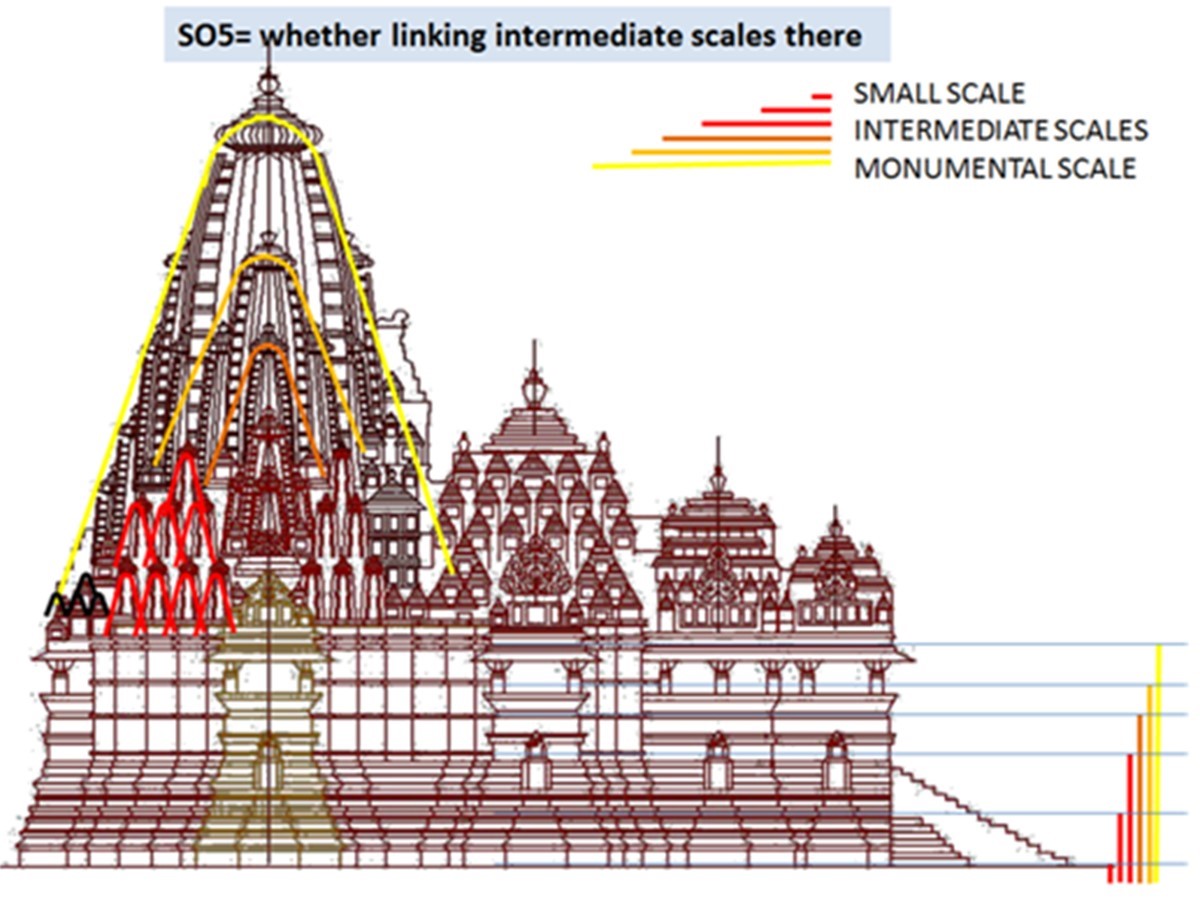
The temples’ different scales and its relation. They seem to replicate itself in different scales. Source: DUTTA and Adane. Shapes, Patterns and Meanings in Indian Temple Architecture. American Journal of Civil Engineering and Architecture. 2018. Volume 6.
Fractal Patterns in the Temple Shikharas and Sculptures
One of the most striking examples of fractal geometry in Khajuraho is found in the design of the temple towers. For instance, the Kandariya Mahadeva temple, dedicated to Lord Shiva, features over 80 shikharas that gradually rise in height, creating a magnificent illusion of upward movement towards the heavens. The shikharas are layered in a manner that each smaller spire appears as a scaled-down version of the larger tower, replicating itself in shape and structure. The technique creates a self-similar pattern, mirroring fractals observed in nature and other sacred geometries around the world.
The fractal principle extends to the thousands of sculptures adorning the temples. The human forms, celestial beings, and mythical creatures are not randomly placed; rather, they are arranged to create patterns that reinforce balance, symmetry, and flow. Each sculpture is part of a larger sequence, echoing itself throughout the temple walls and pillars, creating an aesthetic harmony that feels almost organic. It’s as though the temple itself is alive, with every corner revealing interconnected, fractal-like motifs that guide the viewer’s gaze from one intricate detail to the next.
The mandala, a geometric symbol representing the universe in Hindu and Buddhist iconography, is also employed in Khajuraho. Many floor plans of the Khajuraho temples are based on mandala designs, which use radial symmetry to organize the temple’s spatial layout. The mandala’s inherent fractal nature allows it to replicate patterns within patterns, much like the arrangement of sculptures and shrines within the temples. Each segment of a mandala can be seen as a fractal component, containing the whole within it, which further aligns with Hindu cosmological principles.
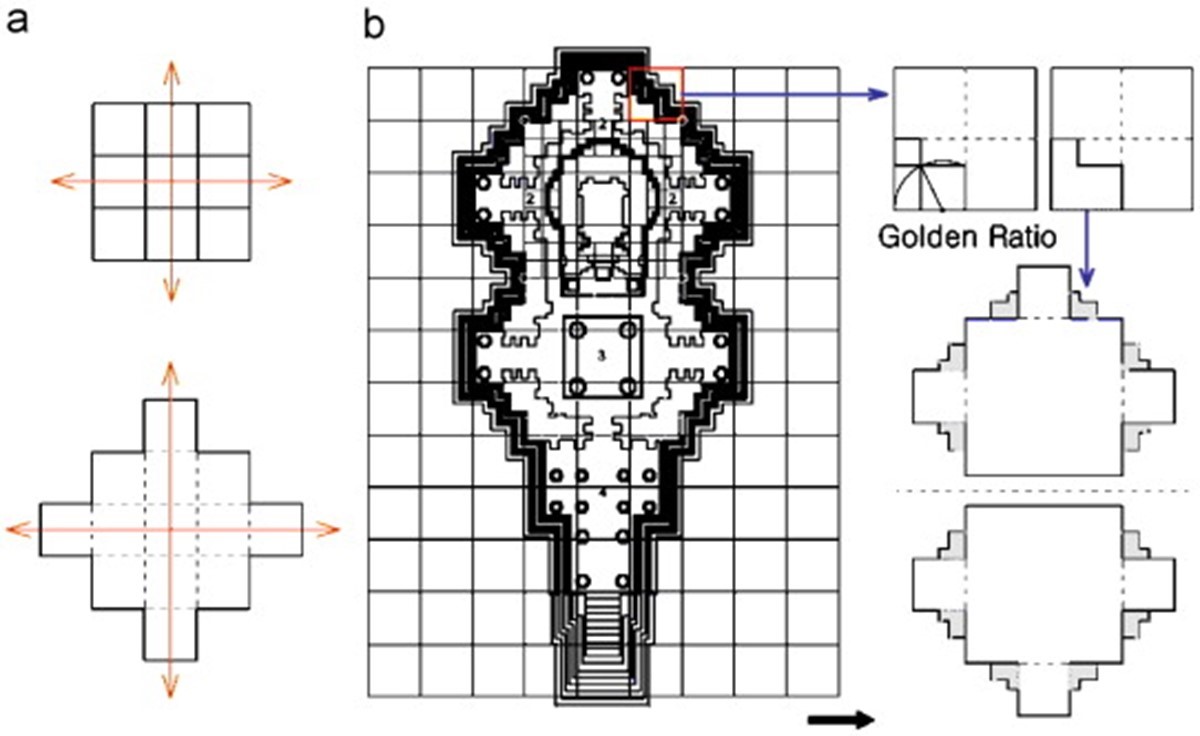
The influence of the ‘golden ratio’ in the temple’s geometry is visible also in plan section. They even remind us the Catholic churches found throughout Europe from the Medieval times onward. In this case, was western culture influenced by Ancient Indian culture then? Source: https://encurtador.com.br/VEDlb
Symbolism and Spirituality Embedded in Fractal Design
The fractal geometry found in Khajuraho temples serves as a metaphor for Hindu philosophy. Fractals symbolize eternity, interconnectedness, and unity within diversity, which are key tenets of Hindu cosmology. The architects and artisans of Khajuraho understood that the divine is both immanent and transcendent, existing within the smallest particle and the grandest cosmic structure alike. The fractal-like self-replication of temple elements in Khajuraho reflects this metaphysical idea, suggesting that the divine can be encountered in every part of creation.
Moreover, the repeated patterns evoke a meditative rhythm, guiding worshippers towards an inner state of peace and unity with the cosmos. The fractal design mirrors the Hindu belief in reincarnation, where life is a repeating cycle, each cycle a new opportunity for spiritual growth and self-realization. The temples, through their structure, remind devotees of this cyclical journey, encouraging them to contemplate the unity of all existence.
Khajuraho Today: A Fusion of Art, Science, and Spirituality
Today, the Khajuraho temples stand as a symbol of India’s profound spiritual legacy and its sophisticated grasp of mathematical principles like fractal geometry. Scholars, historians, and mathematicians from around the world continue to study these temples, uncovering new insights into ancient Indian knowledge systems and the possible construction technologies used to build them. Khajuraho has become a living laboratory of fractal geometry in sacred architecture, highlighting how art and science are interwoven in Indian temple designs.
In conclusion, the Khajuraho Group of Monuments showcases the seamless fusion of art, spirituality, and mathematical innovation that characterized ancient Indian civilization. These temples are not merely places of worship but complex, multifaceted structures that embody fractal geometry in every tower and sculpture. They stand as an enduring reminder of humanity’s quest to understand the infinite, serving as a bridge between ancient wisdom and contemporary mathematical theories. Khajuraho, with its fractal brilliance, continues to inspire awe, echoing the beauty of the cosmos and the interconnectedness of all life.
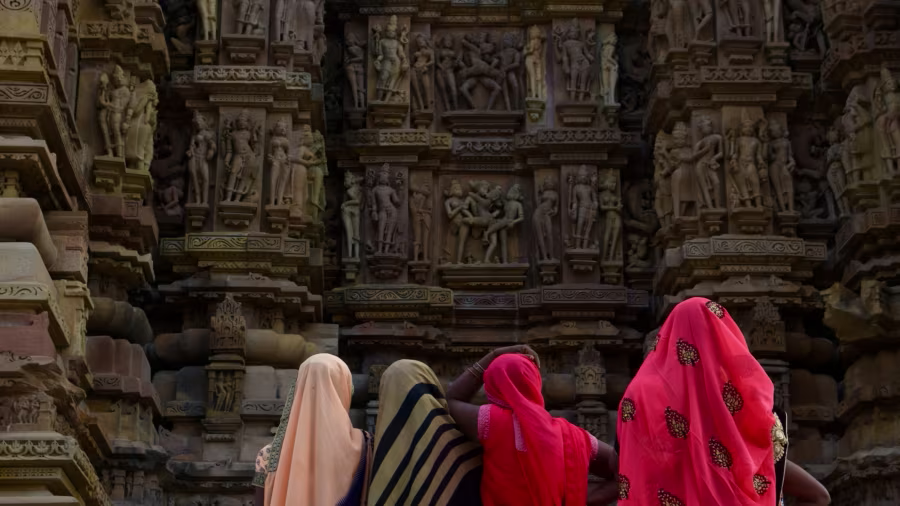
The interesting contrast between current Indian Hindu culture, with their women’s dress code, and the Ancient Indian Art, with its explicit eroticism. Source: https://www.hotelclarks.com/khajuraho/blogs/the-astounding-kandariya-mahadeva-temple.html
Important Sources:
DUTTA and Adane. Shapes, Patterns and Meanings in Indian Temple Architecture. American Journal of Civil Engineering and Architecture. 2018. Volume 6.
https://www.kalinjarfort.com/research/environment-as-reflected-in-chandella-art-and-architecture
https://www.hotelclarks.com/khajuraho/blogs/the-astounding-kandariya-mahadeva-temple.html
https://chhatarpur.nic.in/en/tourist-place/khajuraho/
https://www.sciencedirect.com/science/article/
Cover Image: https://www.hotelclarks.com/khajuraho/blogs/the-astounding-kandariya-mahadeva-temple.html


